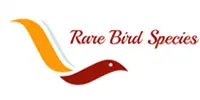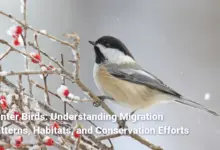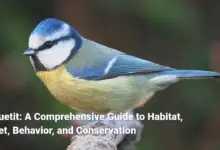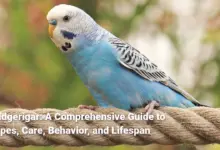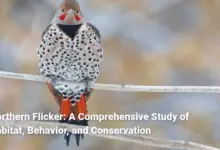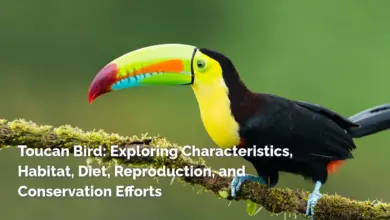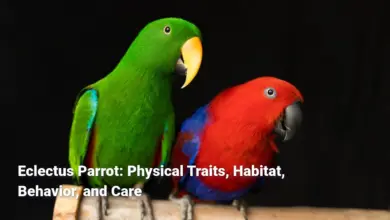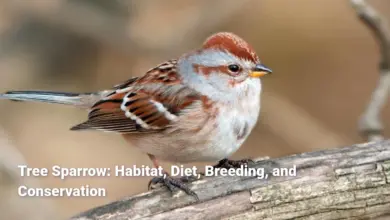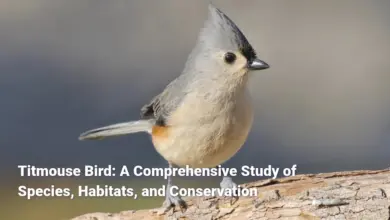Macaw: An In-Depth Guide to Species, Habitats, Behavior, Conservation, and Cultural Significance
A Comprehensive Guide to Macaws: Species Overview, Habitats, Behavior, Conservation, and Cultural Impact
Macaws are a living tapestry of color and intelligence, often regarded as one of the most captivating birds on the planet. Belonging to the Psittacidae family, macaws include approximately 18 species divided mainly into the Ara, Anodorhynchus, and Cyanopsitta genera. These remarkable birds are native to the vibrant tropical regions of Central and South America, where they thrive in lush rainforests, dry woodlands, and savannas, contributing significantly to the biodiversity of these habitats.
Throughout history, macaws have not only enchanted bird lovers but have also played essential roles in their ecosystems as pollinators and seed dispersers. However, their beauty and intelligence have made them targets for the pet trade, while their pristine habitats are disappearing due to deforestation and urban expansion. This article delves into the intriguing world of macaws, exploring their species, habitats, behaviors, conservation challenges, and their remarkable presence in popular culture.
Overview of Macaw Species
Macaws are characterized by their dazzling plumage and a range of striking characteristics that make them some of the most recognizable birds. With their long tails and large, curved beaks, these birds are like the peacocks of the avian world, often standing out in the dense foliage of their natural environments. The different macaw species exhibit varying sizes, colors, and personalities, each adapted to specific habitats and needs. For instance, the Hyacinth Macaw, the world’s largest parrot, captivates with its deep blue color and expansive wingspan, while the smaller Hahn’s Macaw showcases a cheerful green body accented with vivid red patches. The diversity within macaw species symbolizes the rich variety of life forms inhabiting the rainforests, illustrating nature’s artistry.
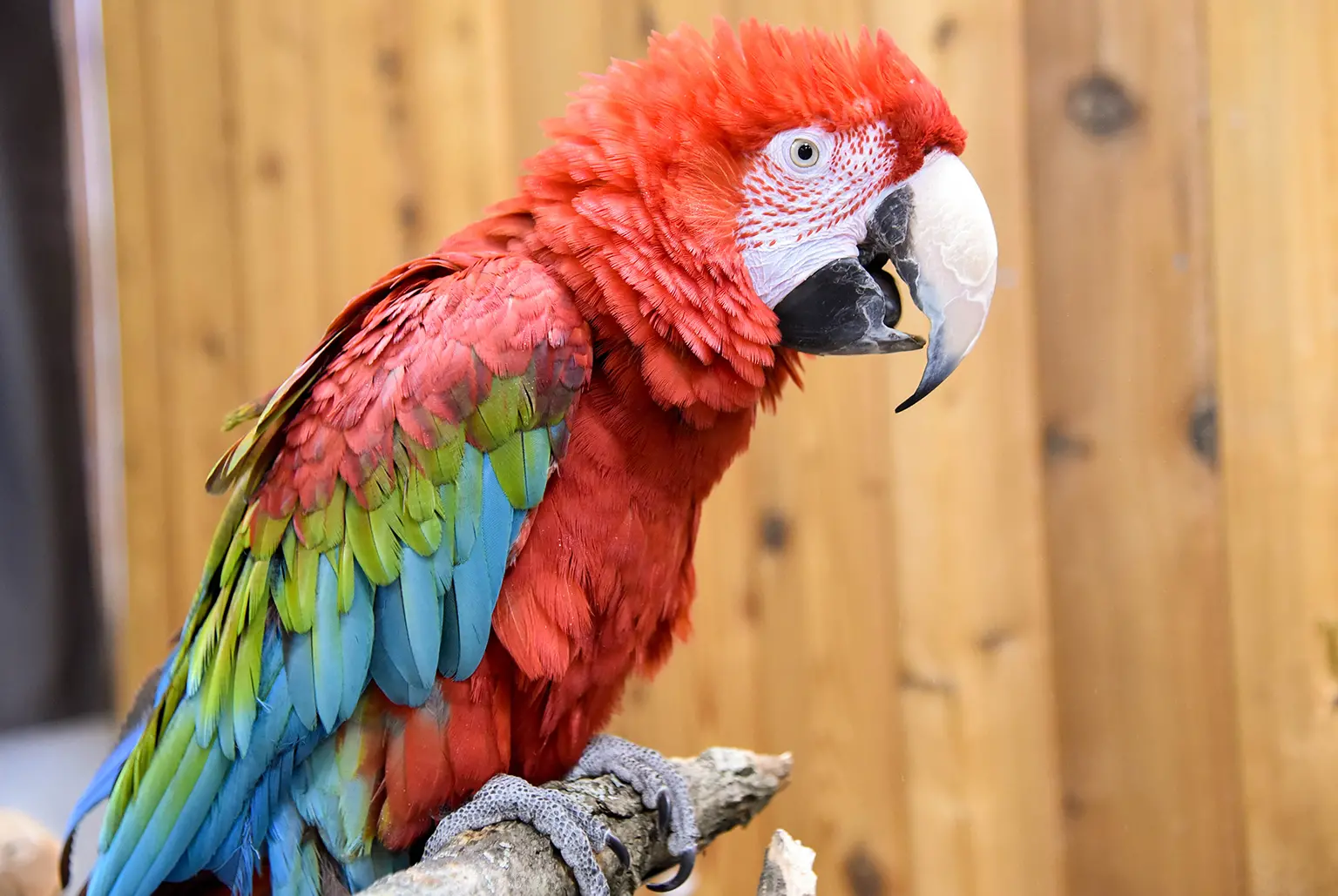
Comparatively, while all macaws are known for their intelligence and social behavior, some species are more proficient in vocal mimicry than others. For example, the Blue-and-yellow Macaw is renowned for its ability to imitate sounds and human voices adeptly, showcasing the macaw family’s inclination for interaction and communication. With distinct physical and behavioral traits, each macaw species has a unique place in its ecosystem, playing vital roles in their environment.
| Macaw Species | Length | Primary Color | Habitat | Conservation Status |
|---|---|---|---|---|
| Hyacinth Macaw | 100 cm (39 in) | Deep blue | Brazil, Bolivia | Vulnerable |
| Scarlet Macaw | 81-96 cm (32-36 in) | Bright red, yellow, blue | Central/South America | Near Threatened |
| Blue-and-yellow Macaw | 80-90 cm (31.5-35.5 in) | Blue, yellow | South America | Least Concern |
| Lear’s Macaw | 70 cm (27.5 in) | Blue | Brazil | Critically Endangered |
| Spix’s Macaw | 55-57 cm (21.5-22.5 in) | Blue-gray | Brazil (historic) | Extinct in the wild |
| Military Macaw | 75 cm (29.5 in) | Green with red forehead | Central/South America | Endangered |
| Red-fronted Macaw | 55-60 cm (21.5-23.5 in) | Green with red patch | Bolivia | Endangered |
Types of Macaws
The majestic world of macaws consists of various species, each with distinct characteristics, behaviors, and adaptations. An expressive representation of avian diversity, macaws not only exhibit striking colors but also display a range of personalities that can fascinate any bird enthusiast.
- Hyacinth Macaw (Anodorhynchus hyacinthinus): As the largest parrot globally, it boasts a stunning cobalt blue plumage, complemented by its impressive size. This macaw is typically found in the woodlands and savanna regions of Brazil and Bolivia. Its strong beak enables it to crack open nuts and seeds, indicating its specialized diet.
- Scarlet Macaw (Ara macao): One of the most recognized species, the Scarlet Macaw has a vibrant red body adorned with bright yellow and blue feathered wings. It thrives in the humid rainforests of Central and South America, forming social bonds within larger flocks. These macaws often communicate through loud calls, enhancing their social interactions.
- Blue-and-yellow Macaw (Ara ararauna): Adored for its captivating coloration, this macaw is easily identifiable with its blue back and yellow front. Its sociable nature allows it to thrive in groups, making it a popular choice among aviculturists.
- Green-winged Macaw (Ara chloropterus): Known for its striking beauty, this species features rich red feathers accented with green and blue wing tips. It is primarily found in the forests of Central and South America, where it engages in vocal behaviors to establish territory and communicate.
- Lear’s Macaw (Anodorhynchus leari): Endemic to Brazil, this critically endangered species is recognizable by its mostly blue plumage. Successful conservation breeding programs are ongoing to increase its population and reduce the dire threat caused by habitat loss.
- Spix’s Macaw (Cyanopsitta spixii): Sadly, this macaw is extinct in the wild and is primarily found in captive breeding programs. Conservationists are focused on reintroducing this species into its natural habitat through a well-coordinated plan, highlighting the importance of preservation.
- Military Macaw (Ara militaris): The predominantly green bodies of these macaws, coupled with a distinct red forehead, provide a beautiful aesthetic. They inhabit the tropical rainforests across much of Central and South America and continue to experience population declines due to habitat degradation.
- Hahn’s Macaw (Diopsittaca nobilis): The smallest macaw, Hahn’s Macaw is known for its playful nature and ability to form strong social bonds with humans. Measuring approximately 30 cm (12 in), it has a predominantly green body with red underparts.
- Golden-collared Macaw (Primolius auricollis): This charming, smaller species features a striking yellow collar and is a visual treat for bird lovers. Found primarily in South America, it faces challenges due to habitat loss.
- Red-bellied Macaw (Orthopsittaca manilata): Recognizable by its green body and red belly, this small macaw inhabits regions of northern South America. It is often seen in groups, utilizing its social structure for safety and companionship.
Macaws are not only characterized by their vivid colors but also their intelligence and social behavior, which makes them endlessly fascinating to observe. Their diversity in size, shape, and personality allows for various expressions of their innate beauty and adaptability.
Characteristics of Macaws
Macaws are often celebrated for their vivid colors and remarkable behaviors, making them some of the most captivating birds on the planet. These unique birds possess various traits that set them apart in the avian world. Their size is one distinguishing characteristic, as they are among the largest parrots. The Hyacinth Macaw, for instance, can grow up to a length of 100 centimeters (39 inches) and weigh up to 1.7 kilograms (4 pounds). This immense size allows them to have strong, curved beaks adept at cracking tough nuts and seeds, which are integral to their diet.
In addition to their physical dimensions, macaws are characterized by their unmistakable plumage, which comes in an array of colors. From the striking reds of the Scarlet Macaw to the deep blues of the Hyacinth and Lear’s Macaws, each species showcases a spectrum of hues that are not merely for aesthetics but also play significant roles in communication and mating. These colors help macaws blend into their natural habitats, serving as camouflage among foliage and flowers, yet they are also crucial in courtship displays, helping individuals attract mates through their beauty.
Macaws are incredibly intelligent creatures; their cognitive capabilities rival those of some primates. Studies indicate that macaws, like many members of the parrot family, exhibit problem-solving skills and the ability to use tools. For example, a Blue-and-yellow Macaw can manipulate objects to retrieve food, showcasing an understanding of cause and effect. Their intelligence is also evidenced by their exceptional vocal mimicry; they can learn human speech and mimic a variety of sounds, displaying their auditory learning abilities.
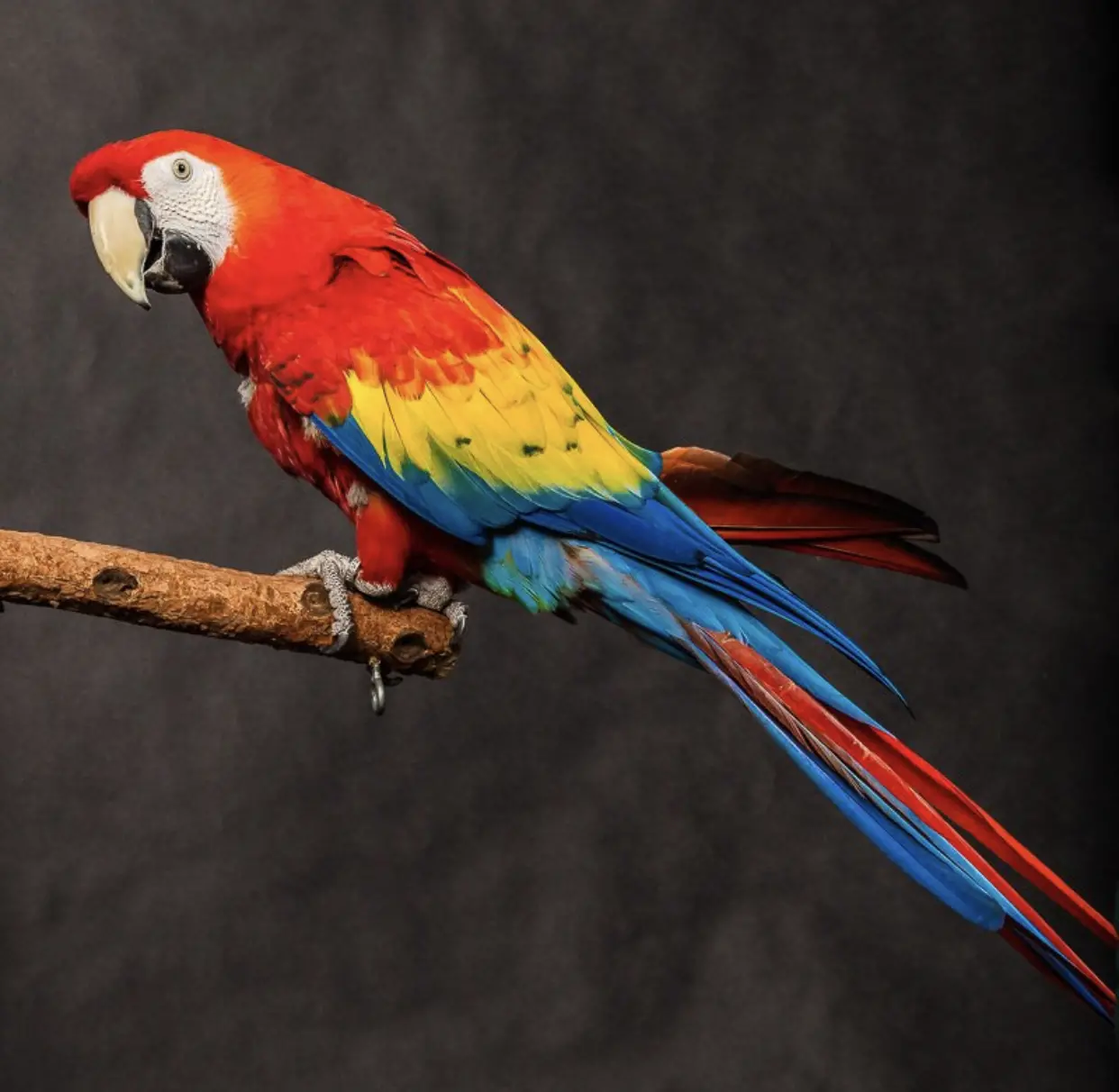
Social behavior is another hallmark of macaws. They are highly social animals, often forming flocks that can consist of several individuals. Within these groups, macaws exhibit strong social bonding and cooperation, engaging in activities such as mutual grooming, which strengthens their relationships. This camaraderie is essential for their emotional and social health, as isolation could lead to stress and behavioral issues. Macaws often show emotional intelligence, providing support to one another in times of distress, which solidifies their reputation as empathetic creatures.
Overall, the characteristics of macaws reflect a robust combination of beauty, intellect, and sociability that continues to endear them to bird enthusiasts and nature lovers alike. Their vibrant colors serve not only to dazzle but also play vital roles in their behavior and survival, illustrating the interconnected relationship between physical traits and ecological roles.
Habitats of Macaws
Macaws thrive in diverse habitats, predominantly in the tropical and subtropical regions of Central and South America. Their primary habitats include rainforests, savannas, and woodlands, where they flourish amidst the rich biodiversity found in these ecosystems. These environments provide not only food but also nesting sites essential for their survival.
The Scarlet Macaw, for instance, is often found in moist, tropical rainforests, where it relies heavily on fruit-bearing trees for sustenance. They adapt to various forest environments, also inhabiting areas known as gallery forests those areas along rivers with lush vegetation. The diversity of their habitat reflects their adaptability to ecological changes.
On the other hand, the Hyacinth Macaw favors the woodlands and savannahs of Brazil and Bolivia, where it nests in palm trees and utilizes these resplendent flora for food. This macaw’s habitat is somewhat unique, as it relies on specific tree species that are crucial for its diet and reproductive needs.
Macaws’ habitats are vital for their feeding and nesting behaviors. They tend to thrive in areas with ample nesting cavities protected from potential predation, as nesting is a crucial life stage for these birds. Notably, the Lear’s Macaw is endemic to Brazil’s caatinga, a dry shrubland habitat, showcasing the remarkable adaptability of macaws to various environmental conditions.
Despite their ability to adapt, macaws are facing increasing threats due to habitat loss from deforestation and global warming. The destruction of these habitats can lead to food scarcity, reducing populations and threatening their sustainability in the wild. As part of their survival strategy, macaws often have extensive home ranges, traveling long distances for food, thus needing vast areas for their foraging activities.
By understanding the habitats of macaws, we can better appreciate their ecological importance and recognize the challenges they face in a rapidly changing environment. These beautiful birds not only symbolize the ecological richness of their habitats but also emphasize the need for ongoing conservation efforts to protect their homes from the dire threats posed by human activity.
Natural Habitats of Macaws
Macaws are predominantly found in varied ecosystems ranging from dense tropical rainforests to open woodlands and savannas. They exhibit remarkable adaptability and can thrive in environments that offer both food sources and suitable nesting sites. The following outlines the key aspects of their natural habitats:
- Tropical Rainforests: Many species, such as the Scarlet Macaw (Ara macao), are primarily found in the lush tropical rainforests of Central and South America. These rainforests provide ample fruit-bearing trees that are crucial for their diet. Species like the Scarlet Macaw prefer canopies rich with vegetation, offering both food and protection from predators.
- Woodlands and Savannas: Species such as the Hyacinth Macaw (Anodorhynchus hyacinthinus) thrive in woodlands and savannah regions, primarily in Brazil and Bolivia. This habitat offers specific tree species, like the Acuri palm, which provide nesting cavities and food sources. The unique structure of woodlands allows macaws to forage and nest, positioning them excellently within their ecological niche.
- Dry Forests and Scrublands: Species like Lear’s Macaw (Anodorhynchus leari) dwell in Brazil’s caatinga habitats, which consist of dry shrublands. These regions require macaws to adapt their feeding strategies; they rely heavily on the Licuri palm, which provides essential nuts and nesting sites, demonstrating their remarkable adaptability to diverse environments.
- Exotic Environments: Some species, like the military macaw (Ara militaris), are more flexible with their habitats, often found in fragmented forests, agricultural areas, and even urbanized landscapes close to their ranges. This adaptability may offer temporary solutions to food scarcity, but such choices can lead to dire consequences for their long-term survival.
The natural selection pressures of their habitats shape macaws’ social behaviors, feeding patterns, and reproduction. Their reliance on specific flora and nesting sites emphasizes the intricate bond between these birds and their ecosystems. While natural habitats are rich in resources, the ongoing threat posed by habitat destruction requires urgent conservation measures to sustain these ecosystems and ensure the survival of macaws.
Impact of Habitat Loss on Macaws
Habitat loss is one of the most pressing threats faced by macaws, significantly influencing their survival and overall population health. The expansion of agriculture, logging activities, and urbanization have led to the degradation and fragmentation of critical habitats where these magnificent birds thrive.
- Reduction in Nesting Sites: Deforestation primarily results in a loss of nesting trees, essential for macaws during reproduction. Many species, such as the Hyacinth Macaw, are dependent on specific tree types like the Acuri palm for nesting. With fewer trees left standing, the chances of breeding success diminish.
- Food Scarcity: The destruction of natural habitats directly impacts the availability of food sources. Many macaw species primarily consume fruits, seeds, and nuts from specific tree species. When these trees are cut down, macaws are often forced to travel longer distances in search of food, which can lead to malnutrition and a decrease in reproductive success as energy reserves dwindle.
- Population Fragmentation: Habitat loss leads to fragmented habitats, isolating populations of macaws. This fragmentation can have significant implications for genetic diversity and population resilience, making it more difficult for isolated groups to interbreed. This can result in inbreeding, a concern that reduces genetic variation and can threaten the survival of these populations.
- Increased Vulnerability to Climate Change: Climate change impacts can exacerbate the effects of habitat loss, further altering rainfall patterns, food availability, and temperatures. As macaws depend on stable ecosystems, extreme weather events and shifting climates can disrupt their habitats, causing further population declines.
- Conservation Implications: The intentional destruction of habitats undermines conservation efforts aimed at protecting macaw populations. Initiatives that promote habitat restoration, sustainable land-use practices, and wildlife corridors are crucial to help these birds adapt to changing environments. Collaboration between governments, communities, and conservation organizations ensures that efforts are directed toward creating safe spaces for these magnificent birds.
Ultimately, habitat loss poses a critical risk to macaw populations, pushing many species closer to extinction. Addressing these challenges requires innovative and sustainable solutions that safeguard their natural habitats, allowing macaws to sustain their populations and remain integral components of their ecosystems.
Macaw Behavior
Macaws exhibit a plethora of intriguing behaviors, reflecting their intelligence, social nature, and vibrant personalities. These behaviors are shaped by their environmental interactions, social structures, and individual traits. The enriching, complex world of macaw behavior reveals the depth of this incredible species.
Primarily, macaws are characterized by their strong social structures. Living in groups ranging from ten to thirty individuals, these birds display sophisticated social interactions. They love to engage in playful activities, vocal communications, and mutual grooming, all reinforcing their bonds and enhancing their social cohesion. These interactions are essential not just for companionship but also contribute to a cooperative approach to foraging and protection against predators.
Communication among macaws is both audial and physical. They are known for their diverse repertoire of vocalizations, ranging from loud squawks to soft whistles. These vocalizations serve various purposes, such as signaling alarm, coordinating group movements, or expressing emotions. The meaning behind different sounds is integral to their social interaction; for example, alarm calls inform the group of potential threats, while nurturing sounds may reassure mates or chicks.
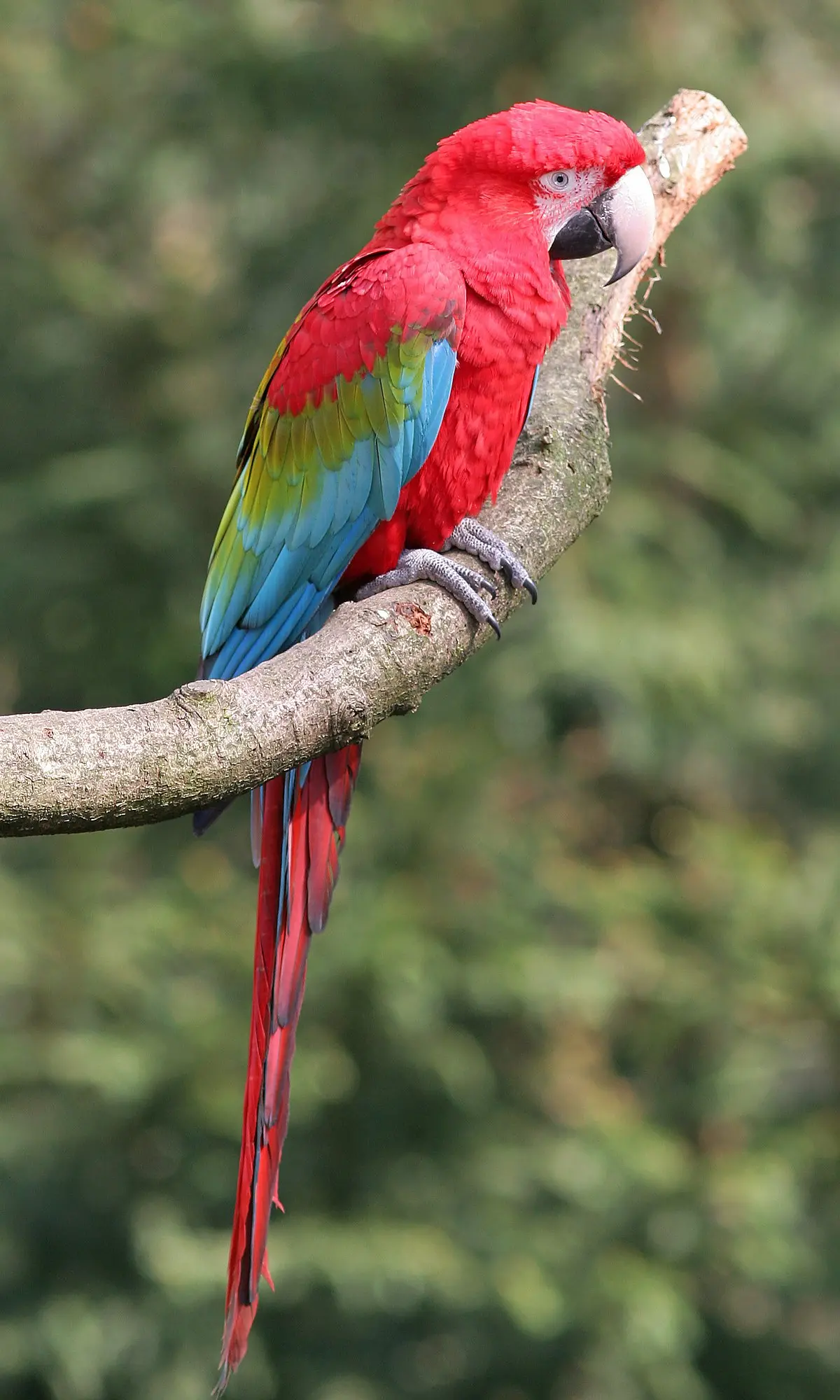
Body language is another vital aspect of communication. Macaws may extend their wings, fluff their feathers, or perform specific movements to convey their emotional states. Such displays can signal readiness to mate or indicate submission. Observing these behaviors is crucial for understanding the overall dynamics within a flock and recognizing an individual’s emotional needs.
Feeding behavior among macaws is particularly fascinating. They adapt their foraging strategies based on available resources, showcasing remarkable problem-solving skills. For instance, they can cleverly manipulate their powerful beaks to open nuts and seeds, demonstrating their intelligence. Observing macaws forage illustrates their ability to navigate their environment and utilize their natural instincts effectively.
Social interactions extend into playtime as well. Macaws often engage in playful antics, flying, chasing, and even teasing one another. This behavior serves to strengthen friendships while also providing essential exercise. Playing is a vital activity, as it promotes good health and emotional well-being, reminding us that social interaction is integral to their overall lifestyle.
Overall, macaw behavior reveals a wealth of social dynamics, intelligent adaptations, and playful characteristics that enhance our understanding of these remarkable birds. Their interactions and activities highlight their complex lives and the importance of social bonds, making them a delight to observe in both the wild and captivity.
Social Structure of Macaws
Macaws have complex social structures that play a crucial role in their daily lives, fostering bond formation, cooperation, and successful breeding. These vibrant birds are social by nature, often living in large flocks that can range from a few individuals to several dozen. The social hierarchy within these groups is marked, allowing them to navigate the dynamics of companionship and cooperation effectively.
Flocks are an essential aspect of macaw behavior, offering safety in numbers as they travel to forage for food. In many species, strong pair bonds are formed, particularly between mating partners, who often mate for life. These bonds are reinforced by mutual grooming behavior that helps maintain feather health and strengthen their social connections. The affectionate grooming sessions illustrate not only their close relationships but also their emotional intelligence a reflection of their ability to care for each other.
Within the flock’s structure, individuals establish a hierarchy that dictates social interactions. Dominant individuals often lead the group and may display more assertive behaviors during feeding or mating discussions. Subordinate members are usually more passive, relying on social cues and established hierarchies to navigate daily life within the flock. This hierarchy ensures that there is minimal discord among members, promoting cohesion and cooperative behaviors necessary to maintain group dynamics.
Macaws also exhibit remarkable empathy and care for one another, displaying behaviors similar to compassion and camaraderie. For instance, if one macaw appears distressed, others may approach, offering comfort through vocalizations and physical closeness. This nurturing behavior emphasizes the strong emotional bonds that exist within the flock, highlighting the importance of social support for emotional well-being.
The social structure of macaws is adaptable, responding to environmental changes and alterations in group dynamics. For instance, when food sources are scarce, macaws may shift their foraging patterns and travel further distances together, illustrating their cooperative nature. When specie dynamics change due to death or changing group compositions, macaws may readily form new bonds, demonstrating flexibility and resilience.
In conclusion, the social structure of macaws reflects their intricate interplay of relationships, emotional well-being, and cooperative behaviors. Their bonds with one another significantly shaped their survival strategies, reinforcing the importance of social interactions in cultivating happiness and health within these stunning beings. By observing macaws in their natural habitats, we gain insight into the balance of friendship, hierarchy, and play that governs their vibrant lives.
Communication Among Macaws
Communication is a fundamental aspect of macaw behavior, making these vibrant birds even more fascinating. Macaws employ a diverse range of vocalizations, body language, and visual cues to express sentiments, establish social hierarchies, and coordinate group activities. Their communication abilities reflect not only intelligence but also the complex dynamics of social living.
In the vocal realm, macaws are known for their loud and varied calls, which serve different purposes. Their vocal repertoire includes:
- Squawks: These sharp calls often alert other flock members to potential threats or disturbances in their environment.
- Whistles: Reflecting happiness or contentment, whistling can be a sign of social engagement among group members.
- Chattering: Used during relaxed moments of interaction and grooming, chattering fosters social bonds within the group.
- Screeches: Indicative of alarm or excitement, these calls allow income to respond quickly to environmental changes or potential predators.
Beyond vocalizations, macaws also communicate through intricate body language. Actions such as fluffing their feathers, head bobbing, and wing displays convey emotions ranging from curiosity to courtship, illustrating a breadth of non-vocal communication methods. For instance, a macaw may fluff its feathers while approaching another bird to indicate friendliness or curiosity, while a head bob could demonstrate excitement or eagerness during social interactions.
Macaws’ vibrant plumage also plays a role in their visual communication. During mating rituals, males may perform elaborate displays showcasing their feathers, while potential mates observe and assess their attractiveness. This interaction emphasizes the significance of visual cues in establishing relationships and attracting partners.
As highly social creatures, macaws depend on effective communication within their flocks. Their vocal calls and body language foster close-knit relationships that contribute to emotional stability and group cohesion. Understanding these communication behaviors can facilitate deeper connections between pet owners and their macaws, empowering caretakers to interpret their birds’ needs and emotions effectively.
In summary, the communication abilities of macaws encompass auditory expressions, body language, and visual cues that enrich their social interactions. Through their vocalizations and behaviors, macaws convey emotions, coordinate responses to environmental changes, and foster relationships, reflecting the complex and dynamic nature of their social life. Observing these communication patterns not only enhances our appreciation for these beautiful birds but also underlines their intelligence and adaptability.
Diet of Macaws
Feeding is a critical aspect of macaw life, with their diet consisting primarily of fruits, nuts, seeds, and occasionally insects. Their diets vary depending on the specific species, availability of food sources, and ecological needs. As highly adaptable creatures, macaws exhibit remarkable abilities to forage and utilize their environment effectively.
- Fruits: Macaws primarily feed on a diverse range of fruits, which provide essential nutrients and hydration. Species such as the Scarlet Macaw consume berries and seeds from various tropical plants, relying on their powerful beaks to open hard shells and access delicious snacks hidden inside.
- Nuts: Nuts are a quintessential part of their diet, with macaws utilizing their robust, curved beaks to crack the tough shells. They particularly enjoy Brazil nuts and other tree nuts, showcasing their ability to forage for food high in the canopy of trees.
- Seeds: Seeds are another staple in the macaw diet. Macaws forage for seasonal seeds found in fruits and vegetation. They present excellent foraging skills, traveling long distances when necessary to locate their preferred food sources.
- Insects and Snails: Although primarily herbivores, many macaw species occasionally consume insects and snails, especially during breeding seasons. These protein-rich snacks are essential for supporting reproductive health and overall well-being.
- Clay Consumption: A fascinating behavior observed in macaws is their consumption of clay from riverbanks. This behavior helps neutralize toxins found in some plant-based foods, aiding digestion and providing essential minerals that contribute to their overall health.
Natural Diet of Macaws
The natural diet of macaws reflects their foraging adaptability and ecological roles in their native environments. These birds play a significant part in their ecosystems, aiding in seed dispersal and contributing to the biodiversity of their habitats. When macaws eat fruits and nuts, they help promote the growth of new plants, creating a symbiotic relationship that fosters healthy ecosystems.
| Food Type | Importance | Examples |
|---|---|---|
| Fruits | Vitamins, hydration | Berries, tropical fruits |
| Nuts | Energy source | Brazil nuts, palm nuts |
| Seeds | Essential nutrients | Tree seeds, grass seeds |
| Insects and Snails | Protein supply | Various insects, snails |
| Clay | Aids digestion, provides minerals | Clay from riverbanks |
By understanding the natural diets of macaws, we can better appreciate their ecological significance and adapt our feeding strategies for those kept in captivity. Ensuring a well-balanced diet fosters both physical health and promotes natural behaviors, allowing these remarkable birds to thrive.
Feeding Habits in the Wild
In their natural habitats, macaws showcase fascinating and complex feeding behaviors shaped by environmental availability, social structure, and dietary preferences. Understanding their feeding habits not only reflects their adaptability but also provides insights into their role in ecosystem health.
- Foraging Strategies: Macaws are skilled foragers, often utilizing their keen eyesight and memory to locate food sources. They tend to prefer foraging in trees, where they can access a variety of fruits, nuts, and seeds. Their foraging habits can also be influenced by seasonal availability, leading them to migrate or travel greater distances to find food.
- Social Foraging: Social dynamics play a crucial role in their feeding habits. Traveling in flocks, macaws engage in communal foraging, utilizing collective intelligence to locate resources. They often communicate with one another, coordinating their movements as they move through the foliage, which enhances their chances of finding plentiful food.
- Feeding Techniques: The powerful, curved beaks of macaws are perfectly adapted for their feeding needs. This physical characteristic allows them to crack open tough-shelled nuts and seeds, while their agile feet enable them to manipulate food items effectively. For instance, they may hold a nut with their foot while using their beak to crack it open.
- Diet Diversity: Macaws display a diverse diet, consuming various food types based on their habitat. For example, the Green-winged Macaw often forages in the canopies for fruits and seeds adapted to its feeding techniques. This versatile diet increases their chances of survival, especially as environments change.
- Nutrient Intake: The consumption of clay along riverbanks is an intriguing behavior among macaws. This practice is believed to help mitigate toxins from their diet, ensuring they receive essential minerals. Eating clay can also be seen as a behavioral adaptation necessary for their overall health.
Through their various feeding strategies, macaws illustrate the intricacies of natural foraging behaviors, emphasizing their adaptability and ecological importance. Understanding these unique traits can help foster healthier and more enriching environments both in the wild and in captivity.
Conservation Status of Macaws
The conservation status of macaws varies widely among the different species, reflecting the ongoing challenges posed by habitat destruction, climate change, and illegal trade. Understanding their status is essential for implementing effective conservation strategies.
Several notable points about macaw conservation include:
- Threat Levels: Many macaw species are classified as endangered or threatened due to persistent habitat loss and poaching. For example, the Spix’s Macaw is extinct in the wild, while others like the Lear’s Macaw are critically endangered. Conservationists are dedicated to reintroducing species like the Spix’s Macaw into their natural habitats.
- Importance of Conservation: Protecting macaws plays a critical role in maintaining ecological balance within their ecosystems. As important seed dispersers, they contribute to plant diversity, enhancing flora populations in their habitats. By safeguarding macaws, we also ensure the continuity of ecological processes.
- Conservation Efforts: Numerous organizations are working tirelessly to protect macaws and their habitats. Captive breeding programs aim to reintroduce endangered species into the wild, while habitat preservation projects strive to implement sustainable practices. The work of teams like the Macaw Recovery Network highlights the vital collaborative efforts necessary to secure their future.
- Community Involvement: Community engagement is crucial for successful conservation. Many initiatives involve educating local populations about the importance of macaws and promoting sustainable practices that align with wildlife preservation. Empowering communities often results in a greater investment in conservation efforts.
- Global Awareness: Raising awareness on the threats facing macaws is essential to garner support for conservation initiatives. Campaigns that highlight the beauty and intelligence of these birds can engage a global audience, fostering a sense of responsibility for their protection.
Macaw conservation represents a comprehensive effort as we strive to protect these magnificent birds, we acknowledge the interconnectedness of their habitats and broader ecosystems. Strengthening conservation initiatives is vital for preserving the beauty and diversity that macaws bring to our world.
Threats to Macaw Populations
Macaws face several significant threats that jeopardize their survival, impacting various species and their populations across the globe. Understanding these threats is crucial for implementing effective conservation strategies to safeguard these beautiful birds.
- Habitat Destruction: Deforestation is the most profound threat to macaw populations. The rapid expansion of agriculture and urban development leads to the destruction of crucial habitats, limiting available nesting sites and food sources. Species such as the Spix’s Macaw have become extinct in the wild mainly due to habitat loss, emphasizing the urgent need for habitat protection.
- Climate Change: Macaws’ habitats are vulnerable to the effects of climate change, which leads to fluctuating weather patterns and loss of biodiversity. Changes in temperature and rainfall can disrupt their breeding cycles and food availability, increasing stress on already threatened populations.
- Illegal Trapping and Trade: The illegal pet trade poses a direct threat to many macaw species. Captured for their beauty and intelligence, these birds are often taken from their natural habitats and sold, further reducing wild populations. Organizations have worked to combat illegal trapping, yet it remains a persistent issue.
- Human-Wildlife Conflict: As human populations expand, interactions between macaws and agricultural practices increase. Farmers may view macaws as pests, leading to conflict that can ultimately endanger these birds. Finding solutions that allow for coexistence like promoting sustainable farming practices is essential to reduce such conflicts.
- Low Reproductive Rates: Macaws generally have slow reproductive rates, with many species producing only a few offspring each year. This low breeding capacity makes it challenging for populations to recover quickly from declines due to habitat loss or hunting pressure.
Preserving macaw populations requires comprehensive efforts to address these threats. This involves enacting stronger protections for their habitats, raising public awareness about the issues they face, and promoting sustainable practices that benefit wildlife conservation and local communities alike.
Conservation Efforts for Macaw Protection
Numerous conservation efforts are underway to protect macaw populations and their habitats, addressing the multifaceted threats these birds encounter. Collaboration between non-profit organizations, local communities, and governments is vital to ensure the sustainability of these initiatives.
- Captive Breeding Programs: Organizations around the world have initiated captive breeding programs designed to conserve endangered macaw species. Breeding individuals in controlled environments allows for greater genetic diversity and healthier populations. Successful examples include efforts to reintroduce the Spix’s Macaw into its native habitat, highlighting the potential for recovery through dedicated conservation measures.
- Habitat Protection Initiatives: Protecting the habitats in which macaws thrive is crucial for their long-term survival. Many organizations engage in reforestation projects and advocate for the preservation of critical landscapes. By implementing sustainable land-use practices and promoting habitat restoration, conservationists can help secure vital resources for macaw populations.
- Community Engagement: Involving local communities in macaw conservation efforts is essential to fostering a sense of stewardship and responsibility. Education programs that highlight the ecological importance of macaws and promote sustainable practices can empower communities to take an active role in safeguarding their local wildlife. Creating economic incentives, such as ecotourism, also encourages community participation while benefiting their livelihoods.
- Research and Monitoring: Ongoing research and monitoring are critical for keeping track of macaw populations and understanding their behavioral patterns. Organizations have adopted advanced techniques, like satellite telemetry, to gather data on macaw movement and habitat use. This information helps inform conservation strategies and tailor efforts to address specific population needs.
- Legislation and Enforcement: Enacting and enforcing laws prohibiting illegal hunting and trade is essential to safeguarding macaw populations. Strengthening legal frameworks and ensuring effective enforcement can help mitigate threats posed by poaching and trafficking, ultimately contributing to a resilient future for macaws.
By adopting a multi-faceted conservation approach, we can address the myriad threats facing macaws. These efforts not only aim to preserve these iconic birds but also enhance the health of their ecosystems, ensuring that both wildlife and local communities benefit from successful conservation strategies.
Macaws as Pets
Macaws are often regarded as fascinating companions due to their intelligence, vibrant personalities, and striking appearances. While they can make rewarding pets, it is essential for potential owners to thoroughly understand the requirements and responsibilities involved in caring for these remarkable birds.
- Social and Intelligent Creatures: Macaws are highly social beings that thrive on interaction and stimulation. Their playful personalities and ability to engage with humans make them appealing pets. However, they require regular socialization to maintain their mental health and prevent boredom, emphasizing the need for dedicated time from their owners.
- Lifespan: Macaws are known for their impressive lifespans, ranging from 50 to 80 years or more. This long lifespan means that adopting a macaw is a long-term commitment owners must be prepared to provide care and companionship throughout their lives, often outliving other pets.
- Space and Environment: These large birds require ample space to fly and explore. Ideally, owners should provide a spacious aviary or cage that enables macaws to stretch their wings and engage in natural behaviors. A stimulating environment, complete with toys and perches, is essential for their happiness.
- Dietary Needs: A well-balanced diet is crucial for a macaw’s health. Owners should provide high-quality pellets specifically formulated for macaws, alongside fresh fruits and vegetables, ensuring a diverse diet that meets their nutritional requirements.
- Emotional and Mental Well-being: Macaws are inherently curious and require mental engagement. Providing enriching activities, interactive toys, and opportunities for training can keep them mentally stimulated. Positive reinforcement training can also strengthen the bond between owner and bird while serving as an outlet for their intelligence.
Care Requirements for Macaws
Caring for a macaw is a rewarding yet challenging endeavor, requiring commitment and knowledge about their specific needs. Below are some essential care requirements for those considering owning a macaw.
- Housing: Macaws need spacious cages or aviaries that provide ample room for movement, exercise, and play. The cage should be at least three times the size of the bird, ensuring they have sufficient space to spread their wings. Proper perches, toys, and climbing structures should be included to enrich their environment.
- Diet and Nutrition: A balanced diet is vital for a macaw’s health. They require high-quality pellets alongside a variety of fresh fruits, vegetables, and nuts. Toxic foods, including chocolate, avocado, and caffeine, should be strictly avoided. Owners should also consider incorporating supplements to support overall health.
- Socialization and Interaction: Macaws thrive on social interaction and companionship. Owners should dedicate time each day to interact with their macaw through play, training, and grooming. Engaging them in activities fosters emotional well-being and strengthens the bond between bird and owner.
- Veterinary Care: Regular veterinary check-ups are essential to monitor a macaw’s health. An avian veterinarian specializes in bird care and can provide preventative measures to ensure good health. Keeping vaccinations and health checks up to date is crucial in maintaining their well-being.
- Exercise and Enrichment: Macaws require regular exercise to maintain physical health and mental agility. Allowing supervised out-of-cage time for flight and exploration is essential. Providing stimulating toys that encourage problem-solving can help combat boredom and destructive behavior.
In summary, owning a macaw as a pet necessitates significant dedication and care. The rewards of companionship and the joy of interacting with these intelligent birds can be substantial, but prospective owners must be prepared for the unique responsibilities that come with this arrangement.
Pros and Cons of Owning a Macaw
Owning a macaw can be a delightful experience, rich with companionship and joy. However, it also presents unique challenges. Understanding the pros and cons can help prospective owners make informed decisions about macaw ownership.
Pros:
- Intelligence and Trainability: Macaws are highly intelligent and capable of learning various tricks and commands. Their ability to mimic sounds and human speech can provide amusement and enhance the bond between the bird and its owner.
- Social Connections: Macaws are known for their affectionate and social nature. With regular interaction, they form strong bonds with their owners and can become loving companions, adding warmth and joy to any household.
- Vibrant Aesthetics: The stunning colors of macaws make them visually appealing pets. Their dynamic plumage offers a beautiful and captivating presence, often resembling living pieces of art that bring color to any space.
- Long Lifespan: With lifespans extending up to 80 years, macaws can accompany their owners for decades. This longevity allows for a deep, meaningful bond to develop over time, enriching the companionship experience.
Cons:
- High Maintenance: Macaws require ample time, effort, and resources. Their need for socialization, mental engagement, and nutrition demands dedication and financial investment from their owners.
- Noise Levels: Macaws are known for being loud, producing vocalizations that can echo through a home. Their calls can be disruptive, particularly in close living conditions, such as apartments or shared spaces.
- Destructive Behavior: Without sufficient stimulation and engagement, macaws may exhibit destructive behaviors, such as chewing on furniture or toys. Owners must provide ample areas for play and ensure they have appropriate toys for chewing.
- Messiness: Macaws can be messy pets, leaving behind droppings and food debris. Regular cleaning and maintenance are required to keep their living space tidy.
In conclusion, owning a macaw comes with both rewarding aspects and unique challenges. The vibrant personalities and intelligence of these birds contribute to enriching companionship, while the care and commitment required can be significant. A deep understanding of their needs can guide potential owners in making thoughtful decisions regarding macaw adoption.
Macaws in Popular Culture
Macaws hold a prominent position in popular culture and are often celebrated for their dazzling colors, intelligence, and social behaviors. Their presence has been amplified through various mediums, including movies, literature, and art, where they capture the imagination of audiences around the world.
Macaws in Movies and Literature
- Rio Franchise: Perhaps the most iconic representation of macaws in film is found in the animated series “Rio.” The films center around Blu and Jewel, two Spix’s Macaws, venturing through vibrant cityscapes and magical rainforests. The series not only entertains but also raises awareness about conservation and the perils of the illegal pet trade, sparking interest in protecting these remarkable birds.
- Dr. Seuss Books: In the whimsical world of Dr. Seuss, birds akin to macaws often appear, embodying the playful spirit of the stories. These representations highlight the joyous and vibrant elements of nature, using macaws as symbols of adventure and enthusiasm.
- One Hundred Years of Solitude: Gabriel Garcia Marquez’s renowned novel features macaws as symbols of freedom and beauty, illustrating their cultural significance. The inclusion of birds in the narrative underscores themes of nature and humanity’s relationship with the environment.
- Parrots in Folklore: Throughout countless folktales, macaws and their relatives often represent wisdom and wit. Their ability to mimic human speech ties them to communication and the transfer of knowledge, resonating within the storytelling traditions of various cultures.
Cultural Symbolism
Beyond their appearances in media, macaws embody deeper cultural meanings across different societies. For instance, in many indigenous cultures of South America, macaws symbolize vitality and renewal, often revered as sacred beings associated with the spirit world. Their vibrant colors and innate beauty connect them to concepts of life and energy, representing the richness of the natural world.
In contemporary culture, macaws often serve as emblems of conservation efforts and represent the fascination humans hold for wildlife. They inspire artistic endeavors in paintings, tattoos, and crafts, symbolizing the desire for freedom and connection to nature.
In summary, macaws play an essential role in popular culture, transcending their biological identity to serve as icons of beauty, freedom, and the urgent need for conservation awareness. Their presence in literature, film, and the arts highlights the intricate relationship humans share with nature and the importance of protecting these splendid creatures for future generations.
Symbolism of Macaws in Various Cultures
Macaws are not just remarkable birds; they also carry significant symbolism in various cultures worldwide. Their striking colors, intelligence, and graceful presence have made them symbols of beauty, vitality, and communication.
- Indigenous Cultures: In many indigenous communities in Central and South America, macaws are revered as sacred beings, often associated with vital forces of nature. Their vibrant feathers are commonly used in rituals, symbolizing a connection to the divine and the natural world. For instance, the Ancient Mayans viewed macaws as manifestations of the sun god, K’inich Ahau, representing light, warmth, and renewal.
- Native American Symbolism: Macaws, like many other birds, are seen as messengers in various Native American cultures. Their ability to fly and navigate the skies symbolizes the connection between the earthly realm and the spirit world. They are believed to bring good news and blessings, with their feathers often incorporated into ceremonial practices for protection and vitality.
- Western Interpretations: In Western cultures, macaws represent exotic beauty and adventure, often depicted in arts and entertainment. Their vibrant appearance and remarkable intelligence suggest freedom and expression, making them popular subjects in artwork and performances. This representation aligns closely with themes of exploration and the celebration of biodiversity.
- Symbolism in Tattoos and Art: Macaws have become popular motifs in tattoos and visual arts, symbolizing individuality and one’s connection to nature. Their brilliant colors and lively spirit capture the essence of freedom and authenticity, encouraging observers to embrace change and follow their passions.
In conclusion, macaws embody a rich tapestry of meanings across different cultures, symbolizing everything from divinity and beauty to communication and joy. Their significant symbolism continues to inspire expressions of art, literature, and cultural narratives, reminding us of the interconnectedness we share with these magnificent birds and the natural world.
